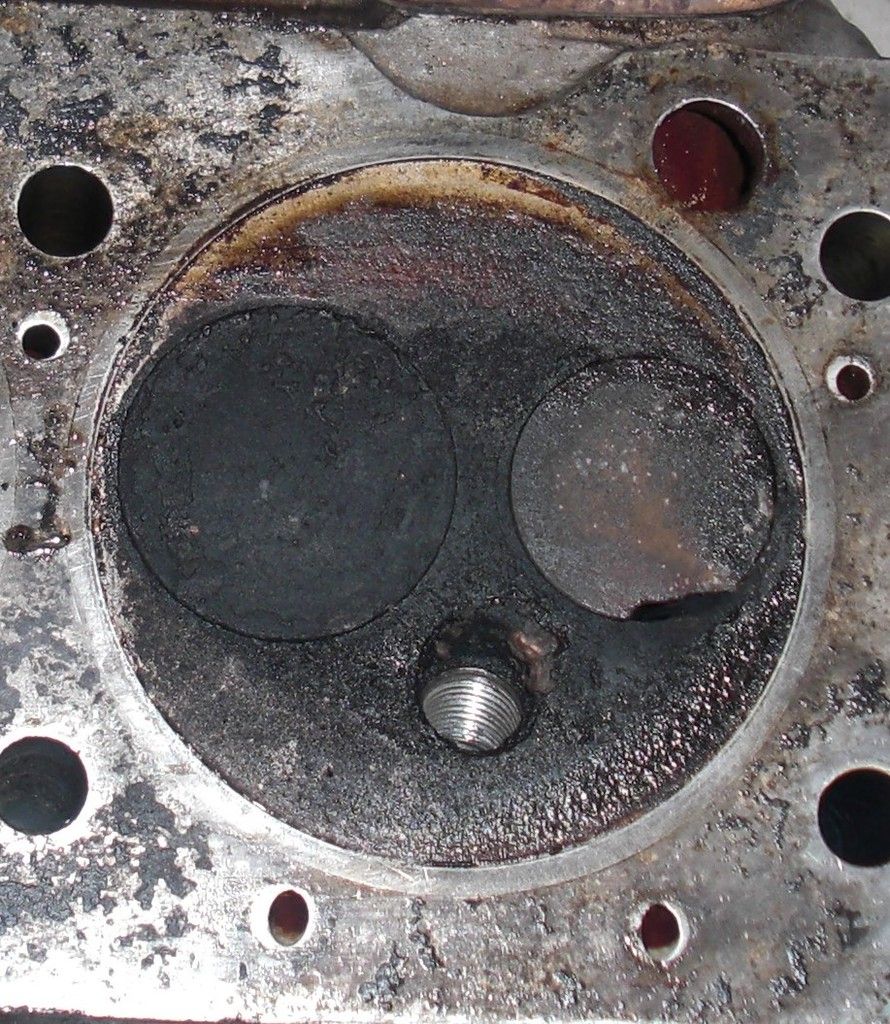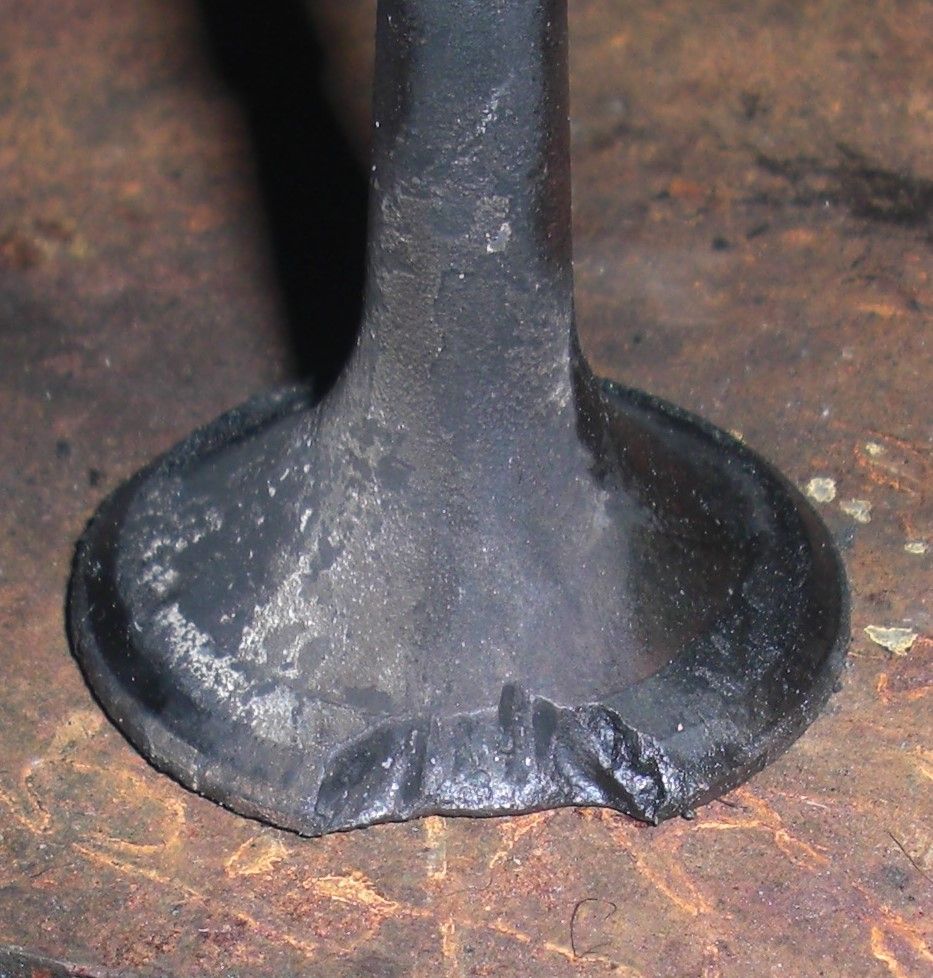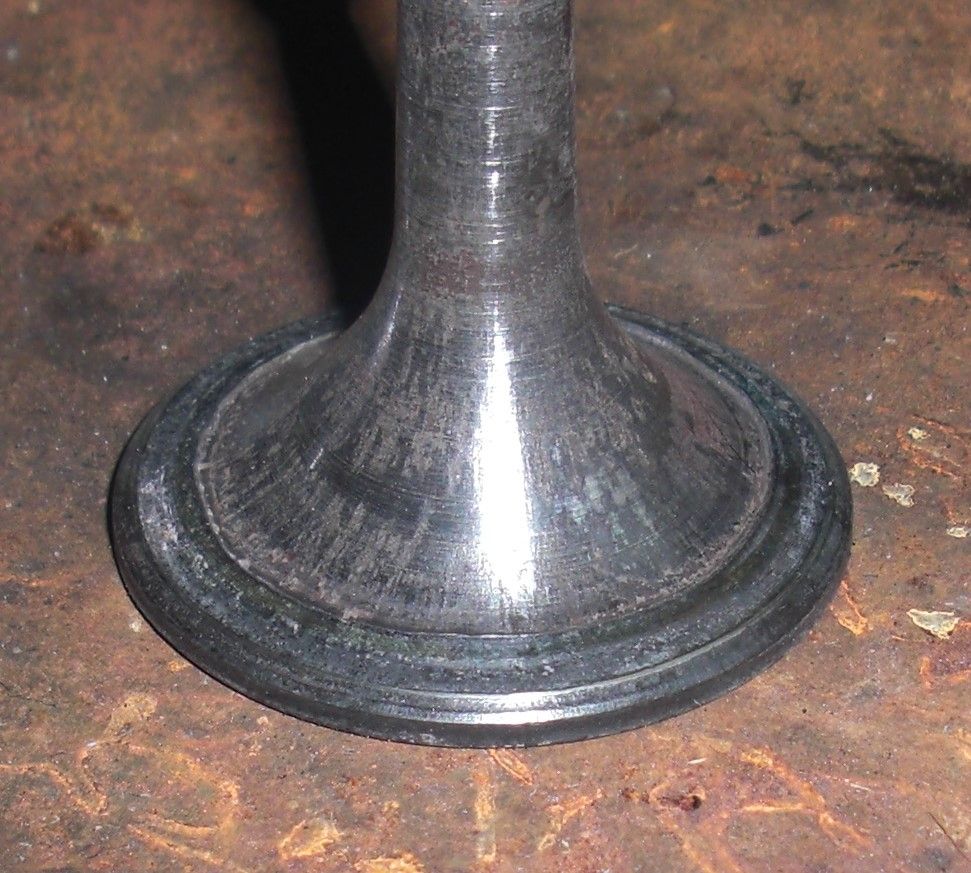You are using an out of date browser. It may not display this or other websites correctly.
You should upgrade or use an alternative browser.
You should upgrade or use an alternative browser.
Failing exhaust valves
- Thread starter pat180269
- Start date
Vern Klukas
Active Member
Pretty common to burn the number 3 exhaust on the 2000 TC engines. And if you had the head skimmed, it wouldn't be uncommon for a valve seat to drop out, again most commonly in the number 3 cylinder.
Yours
Vern
Yours
Vern
It was pretty common back in the day, which is why I would never consider it worthwhile to remove the head specifically to make any alterations for unleaded use, the chances are the head would have to come off anyway sometime, and you might as well wait until then if you do want to do anything.
Seats falling out was common as well, regardless of whether the head had been skimmed or not.
Seats falling out was common as well, regardless of whether the head had been skimmed or not.
Hi harveyIt was pretty common back in the day, which is why I would never consider it worthwhile to remove the head specifically to make any alterations for unleaded use, the chances are the head would have to come off anyway sometime, and you might as well wait until then if you do want to do anything.
Seats falling out was common as well, regardless of whether the head had been skimmed or not.
When you say common, did it affect all 4cyl cars? What did Rover do about it? You never hear the problem mentioned in writeup's about the cars from the sixties and seventy's. Or is it a case of all cars from this period had their problems?
When you say common, did it affect all 4cyl cars? What did Rover do about it? You never hear the problem mentioned in writeup's about the cars from the sixties and seventy's. Or is it a case of all cars from this period had their problems?
All of the 4 pots did it, as did a lot of other cars at the time, it was just something that happened. Valves burnt out, seats dropped (in the case of the Rovers) and you just removed the head, sorted the problem, and put it all back together. (And took the requisite amount of cash of course). Rover never saw it as a problem as most of the time it happened after the car was out of Warranty.
Midlifecrisis
Member
What are the symptoms if this happens?
If a valve burns out you'll get a misfire, and if a seat falls out then you'll get a misfire and a nasty knock.What are the symptoms if this happens?
j_radcliffe
Active Member
I had a seat drop once. You could hear a nasty rattle. I described the symptoms to an English mechanic who worked mainly on Rovers. He said do not run the motor, if the seat disintegrates you will smash a hole in the piston. So the car traveled to him on a truck, and then a tow truck. The head was repaired and valves were ground and maybe 1 or 2 were replaced.
I have been told that if a head is shimmed then you should always ask the machine shop to re-peen the seats.
I have also been told to always use the Rover Nimonic valves in the TC head, a very hard material. Kiwi Rover however has a TC engine head set up with the SC Stellite material, and that has worked fine for him.
If you have a dropped valve insert then you will have a very large valve clearance on that valve.
To avoid problems make sure the valve clearances are not too small. Always err on the side of a bit larger clearance rather than narrow. Also check them at least every 40000 miles, but perhaps with modern lead free fuels then every 20000 miles and adjust as needed. They do close up over time, and do need adjustment.
James.
I have been told that if a head is shimmed then you should always ask the machine shop to re-peen the seats.
I have also been told to always use the Rover Nimonic valves in the TC head, a very hard material. Kiwi Rover however has a TC engine head set up with the SC Stellite material, and that has worked fine for him.
If you have a dropped valve insert then you will have a very large valve clearance on that valve.
To avoid problems make sure the valve clearances are not too small. Always err on the side of a bit larger clearance rather than narrow. Also check them at least every 40000 miles, but perhaps with modern lead free fuels then every 20000 miles and adjust as needed. They do close up over time, and do need adjustment.
James.
Would the latter wreck the head Harvey ?
It doesn't do it any favours! Most heads could probably be welded up and machined to take another seat, but back when I was doing them it usually got a secondhand head, as they were cheap and plentiful at the time, and once the customer found out the cost of the machine work they much preferred the secondhand option. The only exception was 2200Sc heads, as I had a supplier that had hundreds of those bare heads brand new, and as cheap as a secondhand head. I never found out where he got them all from....
Dave3066
Well-Known Member
It's my car which has sparked this discussion. She's burnt out an exhaust valve on No 4 cylinder nearly 40K miles after doing the same on No 2. Here's the offending valve. Looks like it's been nibbled away, but there's no damage anywhere else.


Interestingly, No 3 exhaust valve now has a strange lip on it.

That'll get replaced too.
Harvey, are there any issues with skimming the head flat? The reason I ask is that the area around the valves seems rougher than the rest of the head and I wondered if it was like that for a reason ie to aid the fuel air mix and combustion?
In terms of symptoms, you'll start to notice a slight drop in power and a slight increase in fuel consumption. My car would struggle to pull away from 40 mph in top up a slight incline. Fuel consumption went from a steady 32 mpg to 29 mpg over a couple of months. The valve finally gave out as I was accelerating up a long steep climb in 3rd gear at around 3500 rpm. I suddenly lost power and she started running very rough. I stopped to have a look and do a few checks in case it was a misfire. Disconnecting No 4 HT lead had no effect on running so I knew there was a problem with No 4 cylinder. She still got me back from Inverness to the Borders, a journey of around 4 hours, although she did struggle up inclines and lorries kept catching me.
Dave


Interestingly, No 3 exhaust valve now has a strange lip on it.

That'll get replaced too.
Harvey, are there any issues with skimming the head flat? The reason I ask is that the area around the valves seems rougher than the rest of the head and I wondered if it was like that for a reason ie to aid the fuel air mix and combustion?
In terms of symptoms, you'll start to notice a slight drop in power and a slight increase in fuel consumption. My car would struggle to pull away from 40 mph in top up a slight incline. Fuel consumption went from a steady 32 mpg to 29 mpg over a couple of months. The valve finally gave out as I was accelerating up a long steep climb in 3rd gear at around 3500 rpm. I suddenly lost power and she started running very rough. I stopped to have a look and do a few checks in case it was a misfire. Disconnecting No 4 HT lead had no effect on running so I knew there was a problem with No 4 cylinder. She still got me back from Inverness to the Borders, a journey of around 4 hours, although she did struggle up inclines and lorries kept catching me.
Dave
There isn't any problem skimming the head. The burnt out valve looks a bit strange, as though it's got very hot and melted quickly, rather than over a period of time. The valves look to be very recessed in the seats as well, and that may account for the lip around the other valve. (But that maybe just how it looks in the photo).
Dave3066
Well-Known Member
There isn't any problem skimming the head. The burnt out valve looks a bit strange, as though it's got very hot and melted quickly, rather than over a period of time. The valves look to be very recessed in the seats as well, and that may account for the lip around the other valve. (But that maybe just how it looks in the photo).
Thanks H
The valves actually sit proud of their seats so it must just be the shadow in the photo.
Dave
sdibbers
Well-Known Member
The lip looks similar to the receded intake valves on my Saab (GM gave SAAB junk intake valves in 2008 that would recede to a knife edge in about 50-80k miles!). Knowing now (thanks to Dangermouse) that the seats are very hard I can only assume that the valves are not on our cars. Pretty much every 2000TC I see over here in the states idles poorly because of too tight valve clearances. That has to come from valve recession seeing as the seats are holding up fine.
I did the valve clearances on my 2200Tc over Christmas. I'd took the head off about 18months ago and all the exhaust valve clearances where essential zero so I had to guess to some extent what the shims should be. A couple were tight and I did find that the shims I needed were off the bottom end of the available range due to valve seat recession. I ended up having some ground to the correct size. I think the next time they close up I'll need to have new seats fitted.
Dangermouse
Member
I think a lot of problems with this is down to either poor maintenance or bad carb settings.
sdibbers
Well-Known Member
I think its actually the valves that recede on our cars, not the seats. I did mine this winter on my 2000TC and it took a couple of goes to get it spot on because of fitting a new cam. Took me a day to adjust the valves and set the valve timing correctly. Its a pain to set, but the difference afterwards is great! Smoother idle, more power at the bottom end and mid range, and much nicer delivery of power through the range.
Dave3066
Well-Known Member
I think a lot of problems with this is down to either poor maintenance or bad carb settings.
Bad carb settings I'll give you, but poor maintenance is certainly not a contributory factor in my case. I've never had my engine properly set up on a dyno or rolling road so the needle is probably not optimised for modern fuel. The carb is probably worn too after so many miles so that could well be the next thing on my list to do. By way of update, the head is with an engine shop to be skimmed, have the exhaust valve seats re-cut to the new valves and to have the valve guides replaced as they are excessively worn. I should get the head back in a couple of days to rebuild and put back on the engine.
Dave
Dangermouse
Member
Worn valve guides are probably the cause of your failure. The valve will not seat correctly and then will either burn out or wear a ridge on the edge.

